John Parry’s Manual of Musical Terms and Various Other Subjects Connected with Music Art
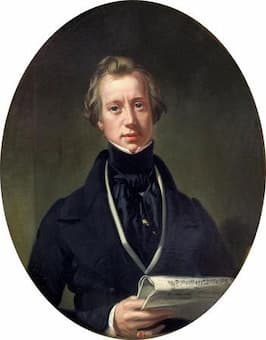
MacLise: John Orlando Parry (1810-1879)
(ca. 1840) (National Museum of Wales)
The English actor, pianist, artist, comedian, songwriter and singer John Orlando Parry (1810-1879) started his career as a singer, harpist, and pianist. He knew and sang with the leading musicians of the day, including Maria Malibran. As a comic actor he was unsurpassed and in his comic music composition, songs such as My déjeuner à la fourchette (1844), Don’t be too particular (1868), and Take a bumper and try (1874) were never going to be serious. None of his music is recorded today.
We found, however, a little book of musical terms by Parry. When you consider his knowledge of music and his career as an artist, this book is a perfect combination of both those talents.

Cover
John Parry’s Manual of Musical Terms and Various Other Subjects Connected with Music Art (to give the full title), published in 1863, redefined musical terms with humor. The foreword states ‘The following whimsical “readings” of Music Terms, etc., etc., will, it is hoped, not only prove amusing but also instructive to the Young Pupil’s studying the Art by impressing the meaning of the words on the mind and forming altogether a sort of agreeable Artificial Memory. J.P.”
Legato, which is given a perfectly clear and standard definition of ‘A smooth and connected style of fingering’ is illustrated by a perfect set of thieves, with their own style of smooth fingering. Infront of a company (with the royal coat of arms over the doorway) called Cribb, Robb, Steele & Co. (all words that indicate thievery), a well-dressed couple is distracted by a ragged flower seller while his pocket is picked of its spotted handkerchief. Over the pickpocket is a sight stating ‘GOODS Removed Round the Corner’ while round the corner a man lurks, and a hand emerges from behind a door.
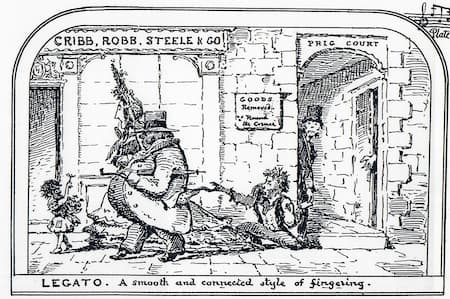
Legato (page 2)
Thomas Morley: Madrigalls for 4 Voices, Book 1 – Aprill is in my mistris face (Pro Cantione Antiqua; Philip Ledger, cond.)
Accelerando is defined as ‘Quicker and Quicker’ as a man slides down a steep slope.

Accelerando (page 3)
Lucilla Galeazzi: Ah, vita bella! (Lucilla Galeazzi, soprano; Alfio Antico, frame drum; L’Arpeggiata; Christina Pluhar, cond.)
The Nonetto gives us two definitions at once. In one case, it’s nine vocal performers, and in another, it’s the relative ranges of 9 singers – from the basso profondo down the well to the soprano assoluto at the top of the church tower. We can see the relative closeness of the alto and contralto and the difference between a tenor and a baritone
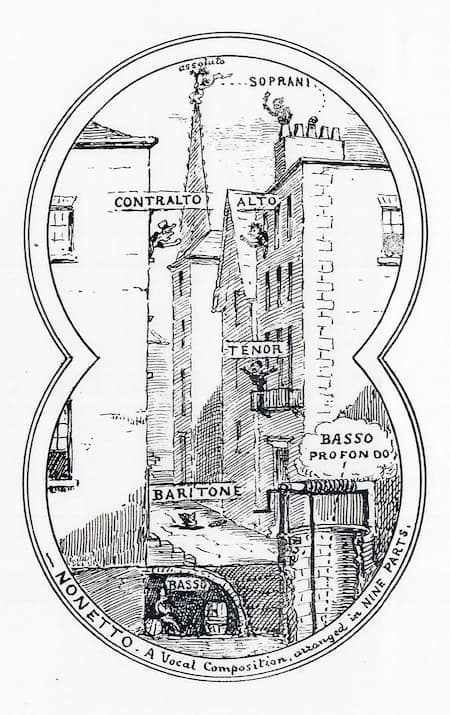
Nonetto (page 4)
Moto Contrario, ‘contrary motion’ is illustrated with two rowers at opposite ends of the boat, rowing in two different directions, a wagon with a horse on each end pulling their own direction, a windmill with men on the sails, two ships sailing at each other each with the wind at its back, two gunmen shooting in different directions with the bird between them, and at the top, two dogs with their tails tied together. Contrary indeed!
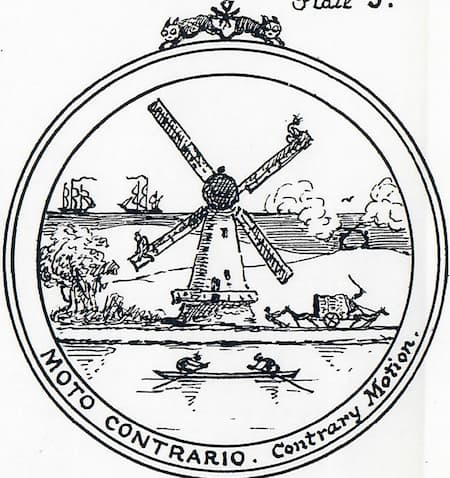
Moto Contrario (page 5)
Philip Glass: Music in Contrary Motion (Nicolas Horvath, piano)
Crescendo and Diminuendo, ‘Increasing and diminishing the sound’ is shown by a choir of all size who, in height order, give us the scale going up, and then La-La-La all the way down. In the middle, a woman with a wig shows what ‘Altissimo’ might mean.
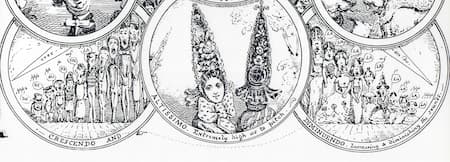
Crescendo and Diminuendo (page 6)
Henry Bishop: 12 Original English Glees: Foresters, Sound the Cheerful Horn (Pro Cantione Antiqua; Mark Brown, cond.)
The Armonica, or Glass Harmonica as we know it today, is shown by a man with a watering can falling through a glass frame, used for helping vegetable to grow in the spring.
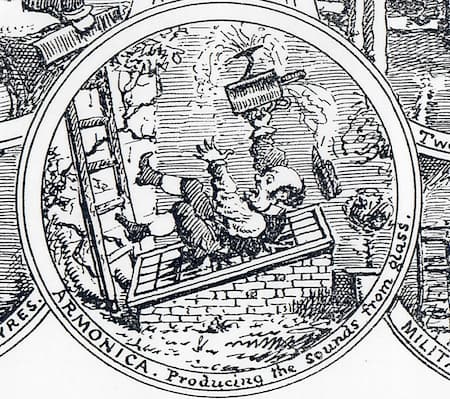
Armonica (Page 7)
Wolfgang Amadeus Mozart: Adagio und Rondo, K. 617 – Rondo (Thomas Bloch, glass harmonica; Philippe Bernold, flute; Maurice Bourgue, oboe; Jean Sulem, viola; Xavier Gagnepain, cello)
FO, or Full Organ, ‘Very loud Indeed’ is illustrated with Jack the Giant Killer (or Jack and the Beanstalk) and the giant (Fa, Fe, Fi, FO, Fum, I smell the blood of an Englishman!!). Jack, shown on the left, posing perhaps as Britannia, shield at the ready to counter the giant.
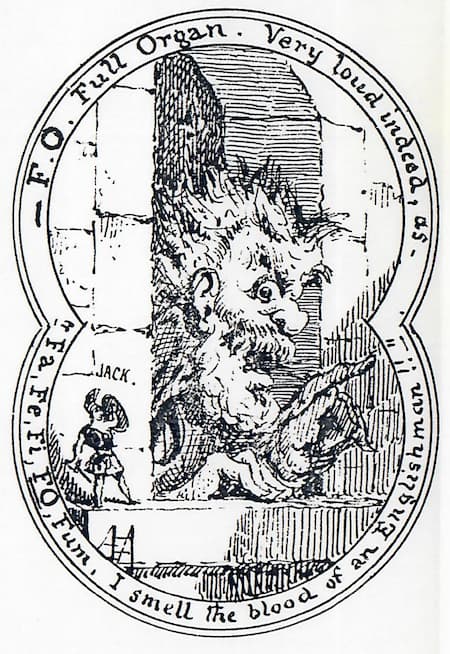
FO (Page 8)
The plight of the short organist is illustrated in Senza (Without the pedals).
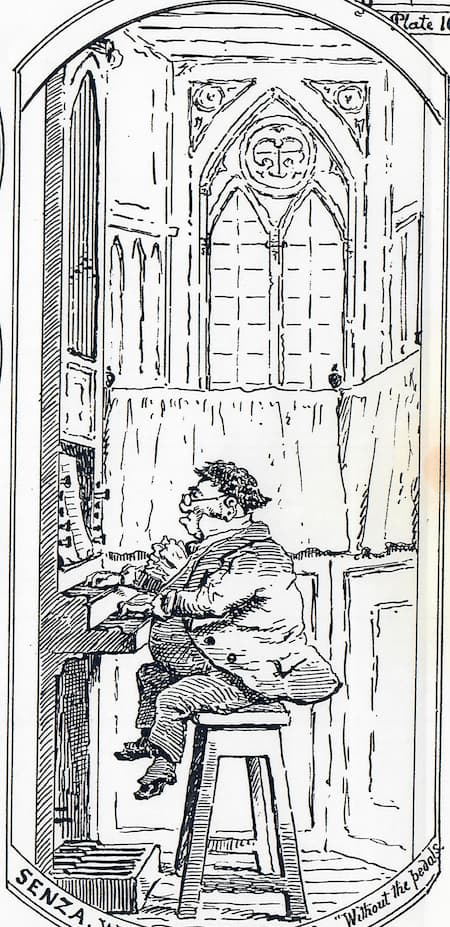
Senza (page 10)
Other illustrations of ‘Elementary Works on Music’ illustrate a large-eared man for The Tuner’s Assistant and for Schloss’s New Method of Learning the Guitar in One Lesson!, a beginning guitarist is learning to play extremely quickly because of all the guns of brigands bringing to bear on him.

Schloss’s New Method (page 11)
The One Bar Rest shows exactly how useful a stile across the path can be.
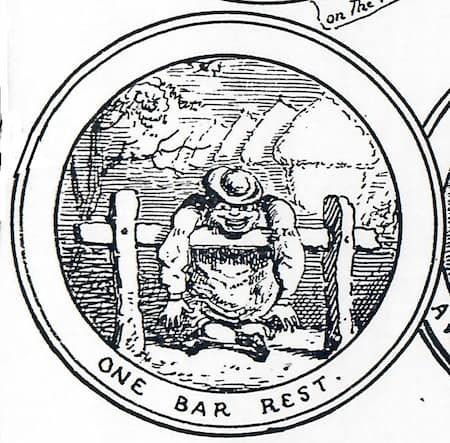
One Bar Rest (page 12)
As befits the 19th century, the pictures aren’t always in the best of taste and tend to be bit low in their humor, but you’ll never forget the difference between Crescendo and Diminuendo again!
For more of the best in classical music, sign up to our E-Newsletter




